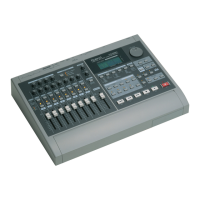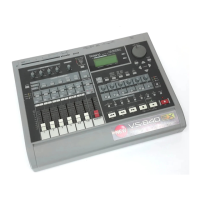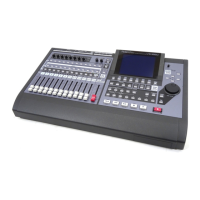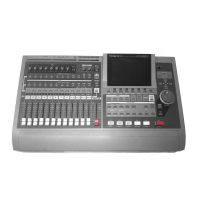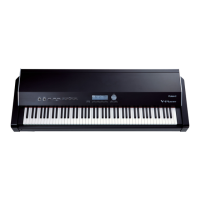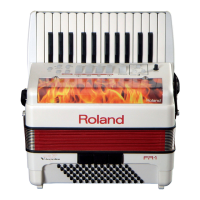31
Chapter 2: Understanding Your VS-880EX
For example, you would use the [PARAMETER] buttons to move through the different screen displays
used during the editing process.
[CURSOR] Buttons
Use the [CURSOR] buttons to navigate around the inside of a single screen display.
For example, use the [CURSOR] buttons to move from one value setting to another inside the same screen.
The [CURSOR] buttons are also used as the [YES] / [NO] buttons.
[YES] / [NO] Buttons
The [YES] button is also used to answer “YES” whenever the VS-880EX displays a question in the LCD.
Alternately, the [NO] button signals a “NO” response. For example, anytime the VS-880EX display asks
you a question (i.e. when you see a ?), you must press the [YES] button to continue forward or press the
[NO] button to return to the previous command.
TIME/VALUE Dial
The [TIME/VALUE] dial is used for to two separate functions.
A: To change the actual value of a selected (highlighted) setting in the LCD screen display.
B: To move forward or backward in time, through the recording.
Use the cursor buttons to change the selected value of each click of the TIME/
VALUE dial (see editing resolution - Application Guide page 25).
VS-880EX Demo Songs
All VS-880EX’s are shipped with at least one demo song. Use it to experiment with your VS-880EX to
familiarize yourself with the controls. The demo songs contain settings that allow you to switch scenes and
compare different versions of the song. The demo songs contain recorded audio and do take up storage
space on the internal drive. If you would like to erase the demo songs and restore recording time to the
internal hard drive, refer to the section, “Erasing the Demo Songs” (page 138 of this guide).

